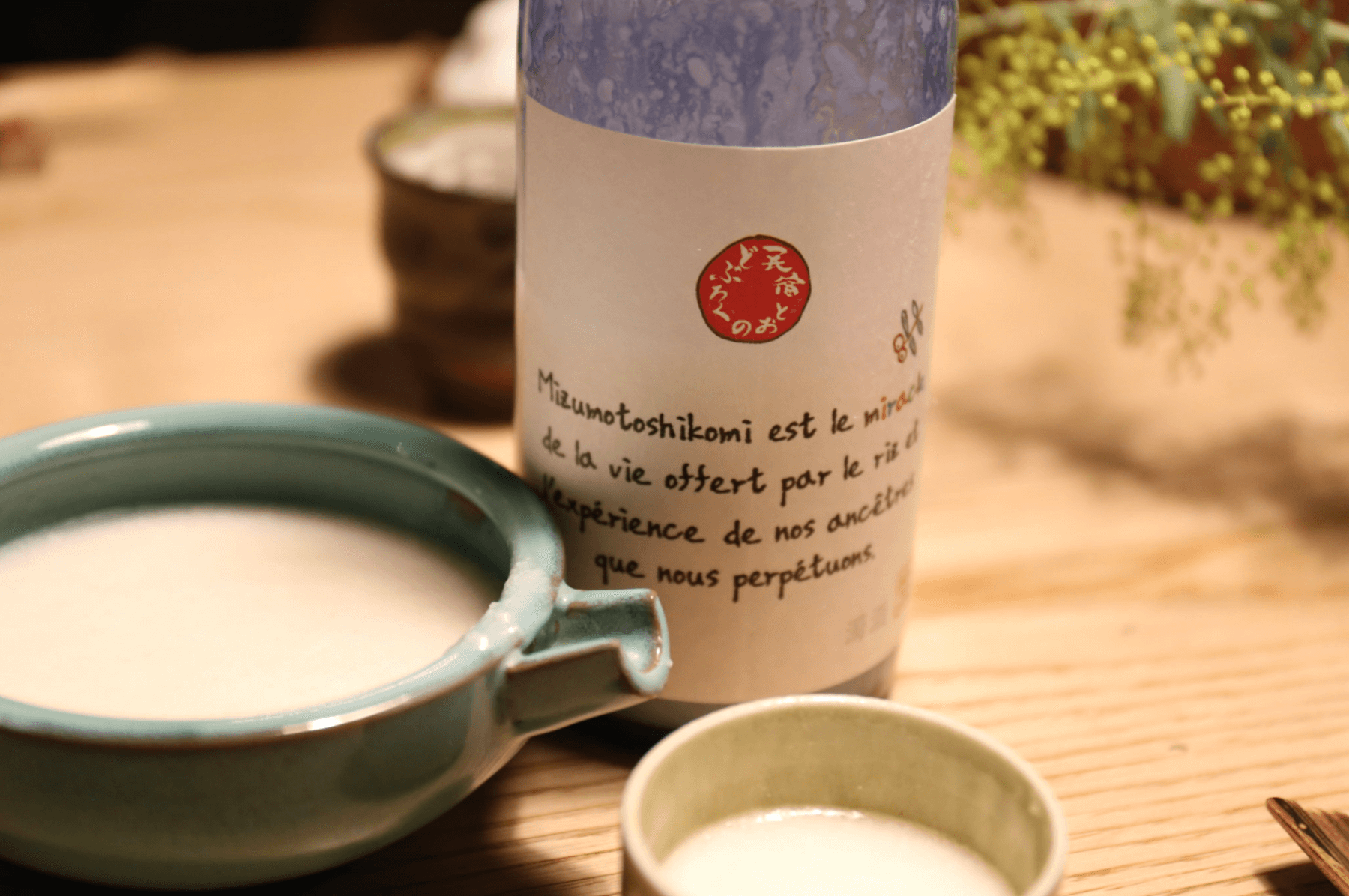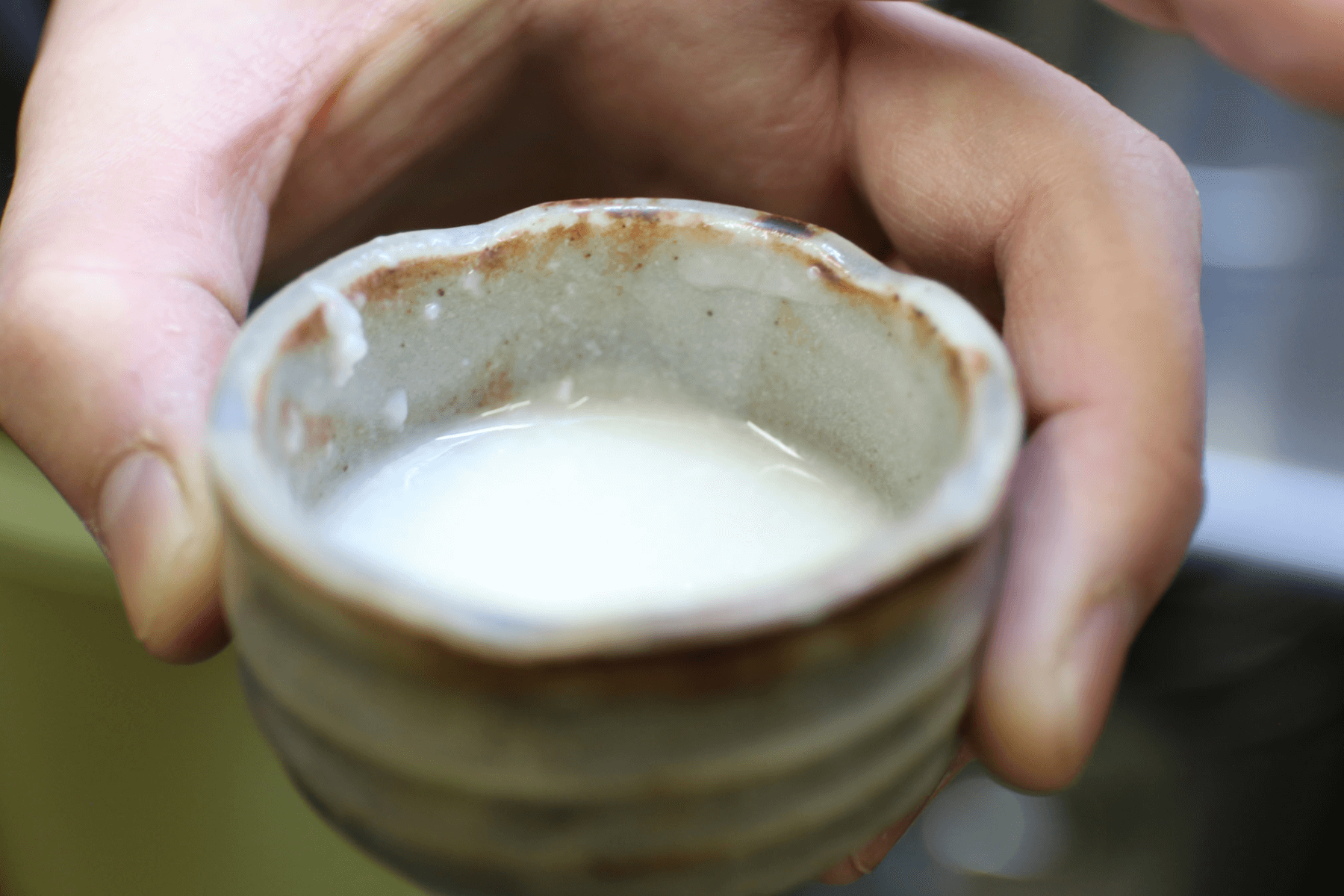An interview with Francesca Bray, who has spent many decades researching the global importance of rice. Beyond the methods of cultivation, Francesca is continually fascinated by the part rice plays in politics and trade networks, modern society and human civilisation.
Beyond Sake: Japanese rice wine, and the fascinating world of Doburoku
By Pablo Alomar Salvioni
We’re all familiar with sake, the alcoholic rice wine which is known as Japan’s national drink. There are myriad different varieties and flavours, and the proper term is Nihonshu or Seishu in Japanese. While sake is well-known, however, there is another drink with the appearance of a cloudy sake that often falls under the radar. It’s sweeter, lower in alcohol, and its short shelf life makes it far harder to come by outside Japan. What’s more, it’s illegal to brew or drink it in Japan unless you have a very specific licence to brew. What are we talking about?
Doburoku. Normally a traditional homemade drink, doburoku has a long history dating back centuries. It fed the souls and minds of impoverished farmers, and was even offered to the Gods for a better harvest. As sake was only affordable for the upper classes, this was the booze for the humble and working-class people in Japan.

What exactly is Doburoku?
It’s an intriguing white drink that looks like a rice porridge. Often it contains some residual CO2, due to the lack of any pasteurization and filtration that can taste rich and fresh. It has a sweet touch and with an alcohol percentage of 12% in most cases, this results in a disgustingly damn good drink!
In Japan, we can find some producers making this ancient drink. Kamoshida is one of these, producing high quality doburoku in Tono, Iwate region. It is one of the few Japan´s allowed special brewing districts. Also some restaurants have the license to serve their own homemade doburoku, but still it’s very rare to find. In Japan you cannot produce this drink at home, however making doburoku is relatively simple if you can get the main ingredients, and outside Japan you can do it at home. During the most severe lockdown weeks, many people were making doburoku outside Japan.
Difference between sake and doburoku
Essentially, it follows the sake making process but differs in two main areas – the making process, and the filtering. Sake is made by adding all the ingredients at different stages, while with doburoku we add them all at once. This makes the fermentation stop, producing less alcohol as the sugar produced from the transformation of starch kills the alcohol produced. So doburoku ends up being sweeter than sake and lighter in alcohol content.
In terms of filtering, to be labeled as Sake ( Seishu or Nihonshu), there must be a press and filtration process in order to deliver a filtered drink once the fermentation is over. Even though Nigori or Murouka can look like unfiltered sake, they do go through a filtration process. Doburoku is not filtered even once so that makes it unique and illegal….due to taxation issues. For these two reasons, doburoku can’t be called a sake.

Where to find Doburoku
There is a small revival of doburoku in Japan and now it’s relatively easy to come across a bottle of it. A few restaurants have their own homebrew version, but outside Japan it’s very rare to find doburoku. Basically, because it’s very wild and unstable it can go rotten easily if it’s not kept in the right conditions. In Spain we import the one from Kamoshidaya, we are having some success in famous gastronomic restaurants like Mugaritz. Few years ago, was served it in a special designed hake dish and we were serving 2 cases a week.
I know it’s appearance is not for everyone, but the truth is that it’s the most natural alcoholic drink you can get, as there are any chemicals at all. Give it a try if you can… and you might want to use a spoon as well…!
BY PABLO ALOMAR SALVIONI @pabloalomarsalvioni
Certified CSP and AS& WSETL3 in Sake -WSET Educator.
Basque Culinary Center Sake Expert.
salvioni-alomar.com / sourcingtheearth.com
